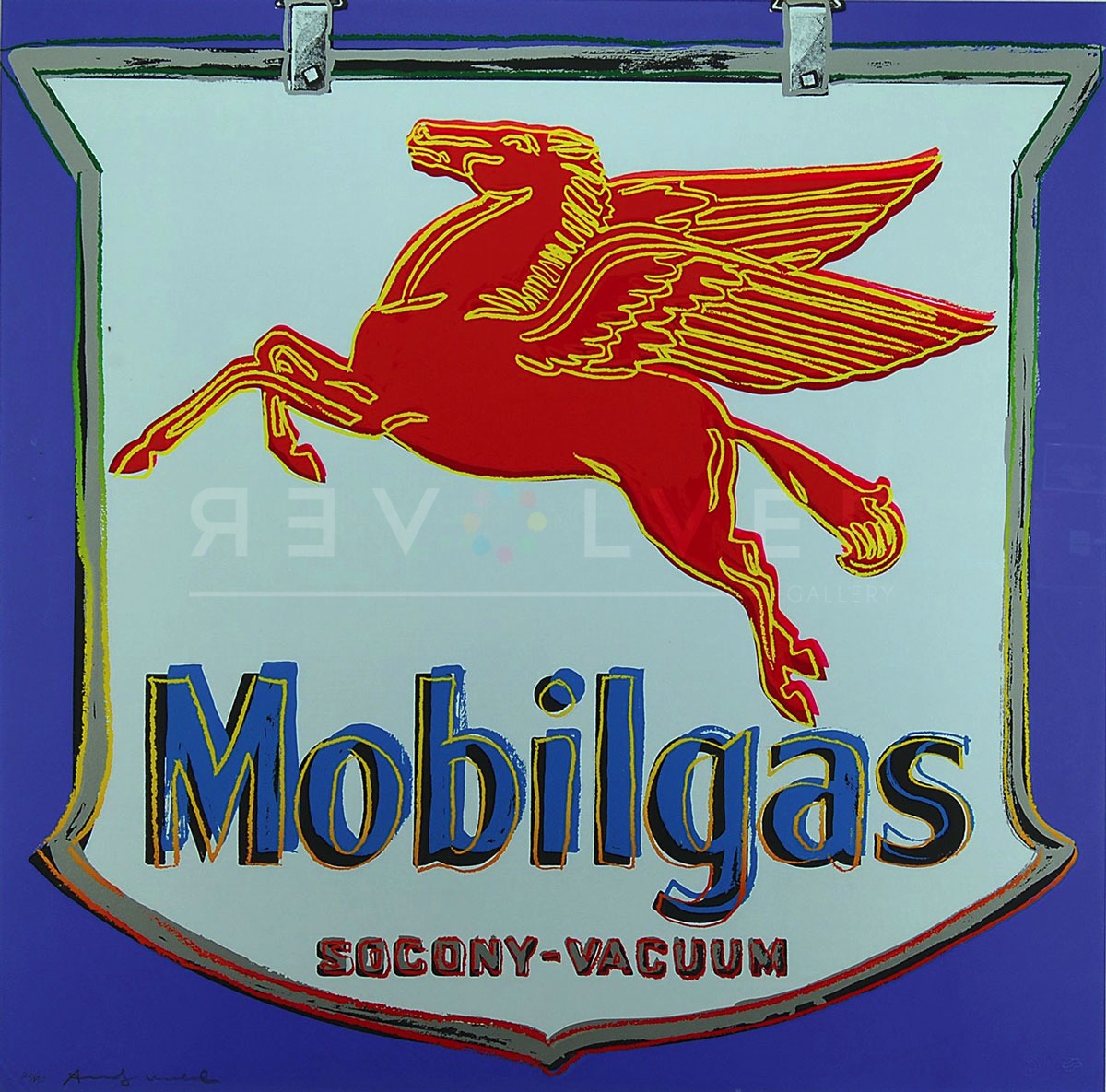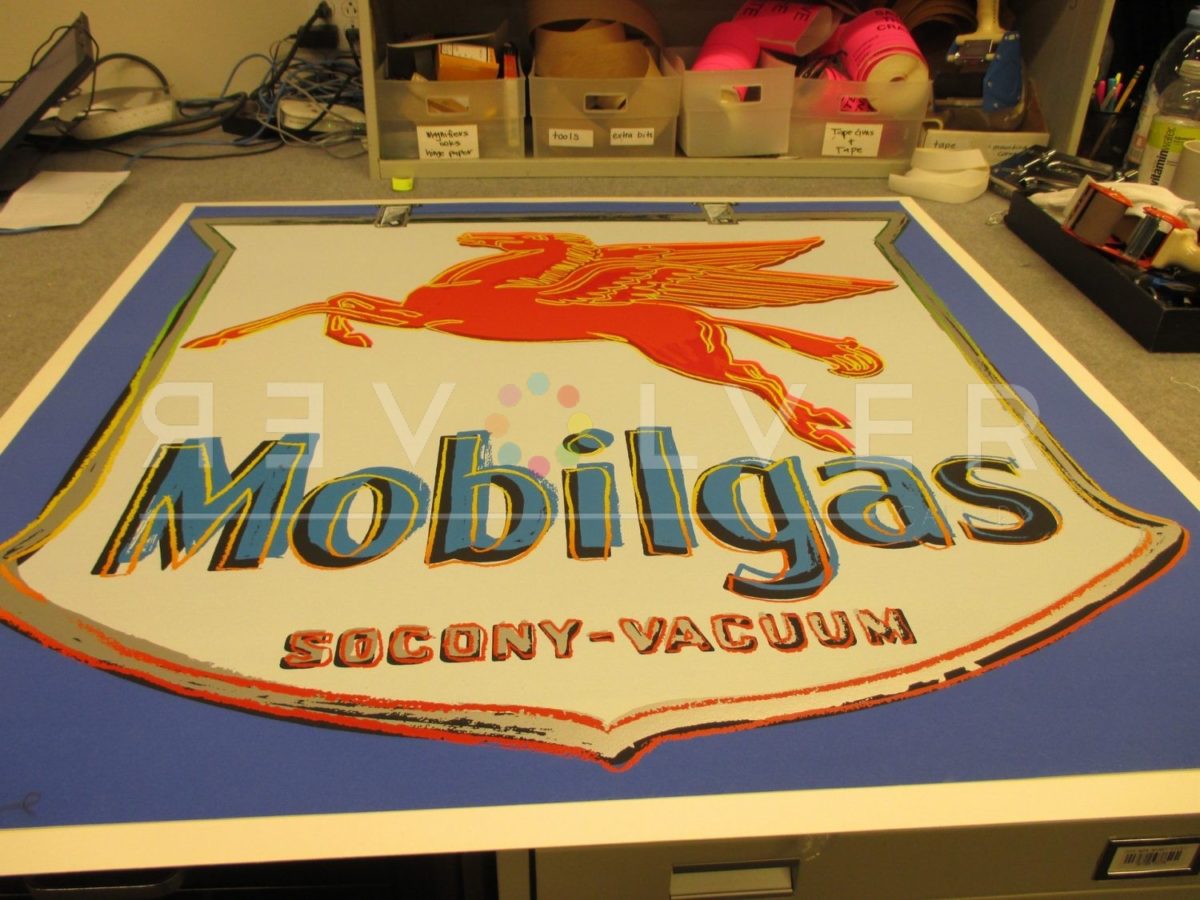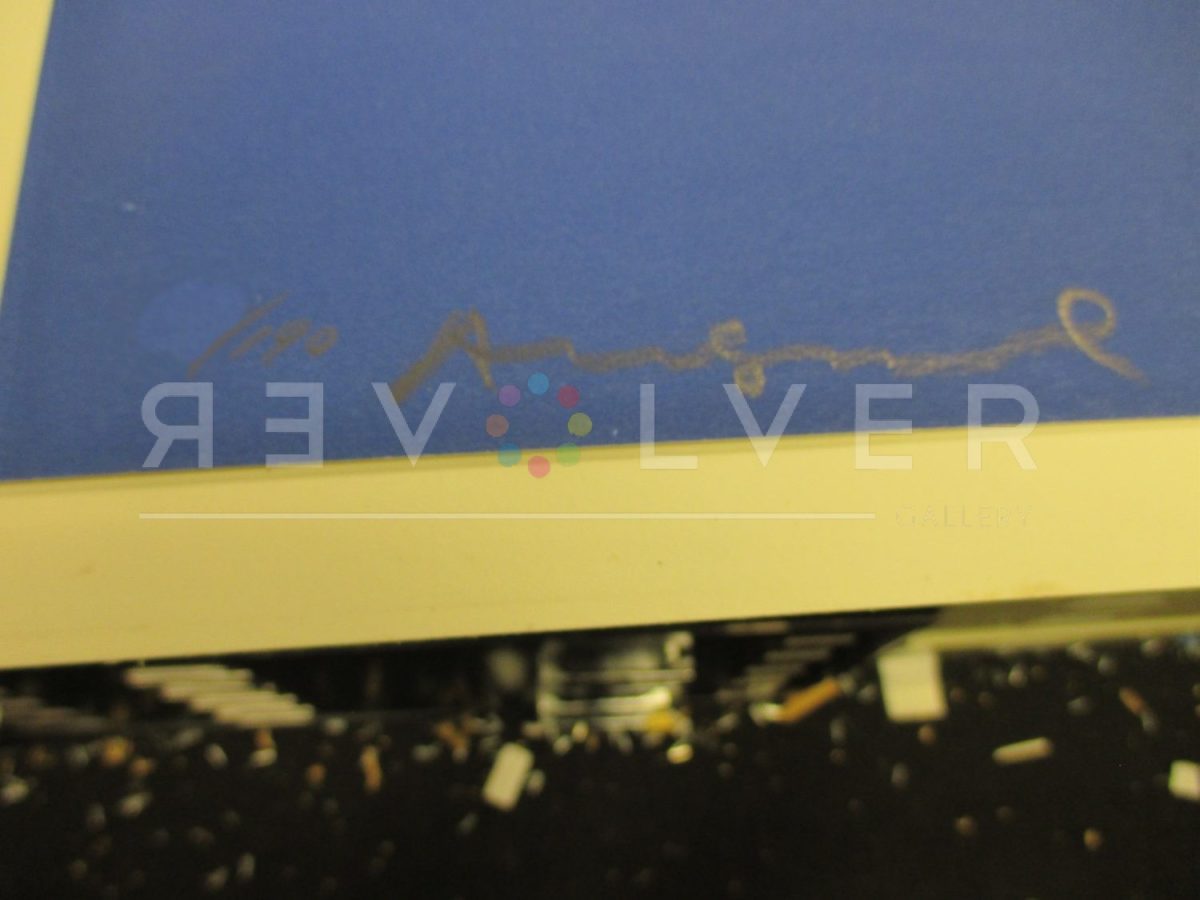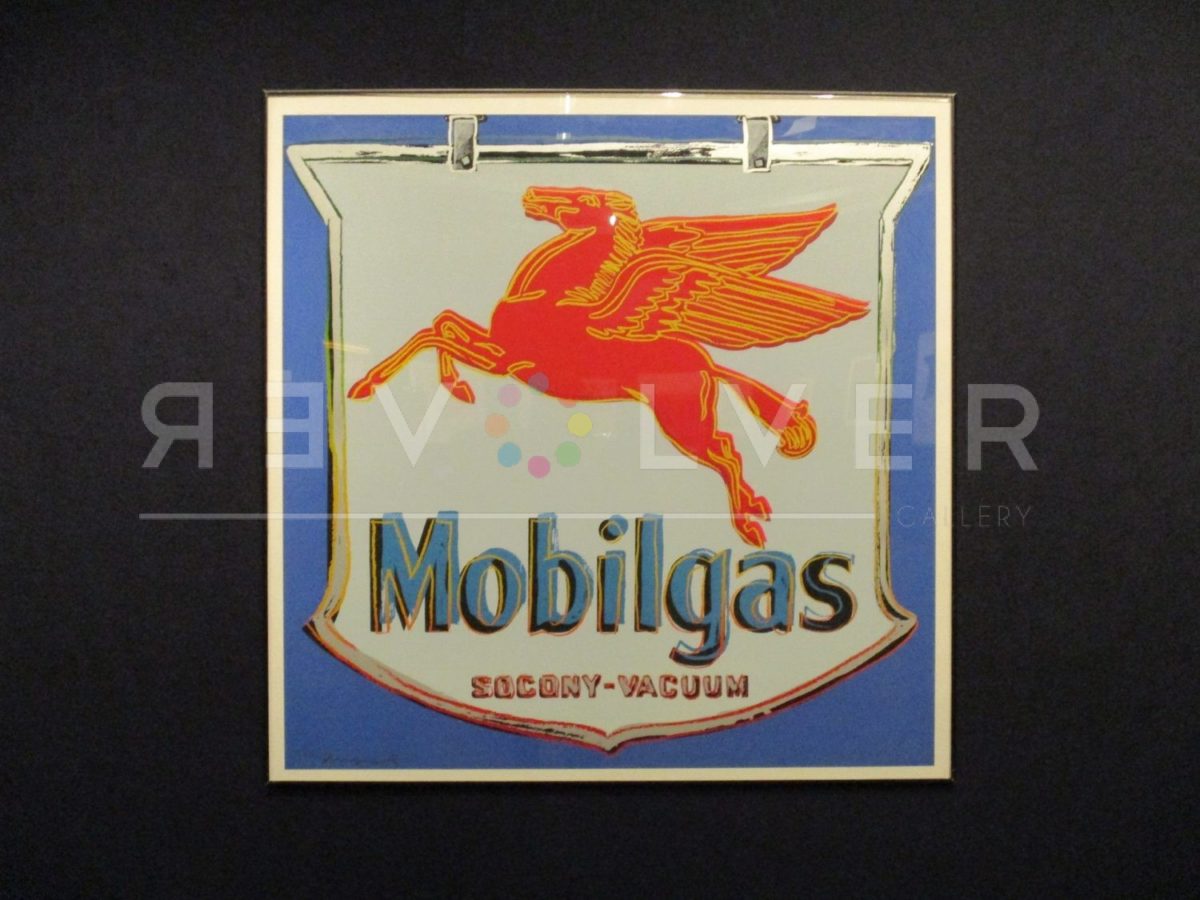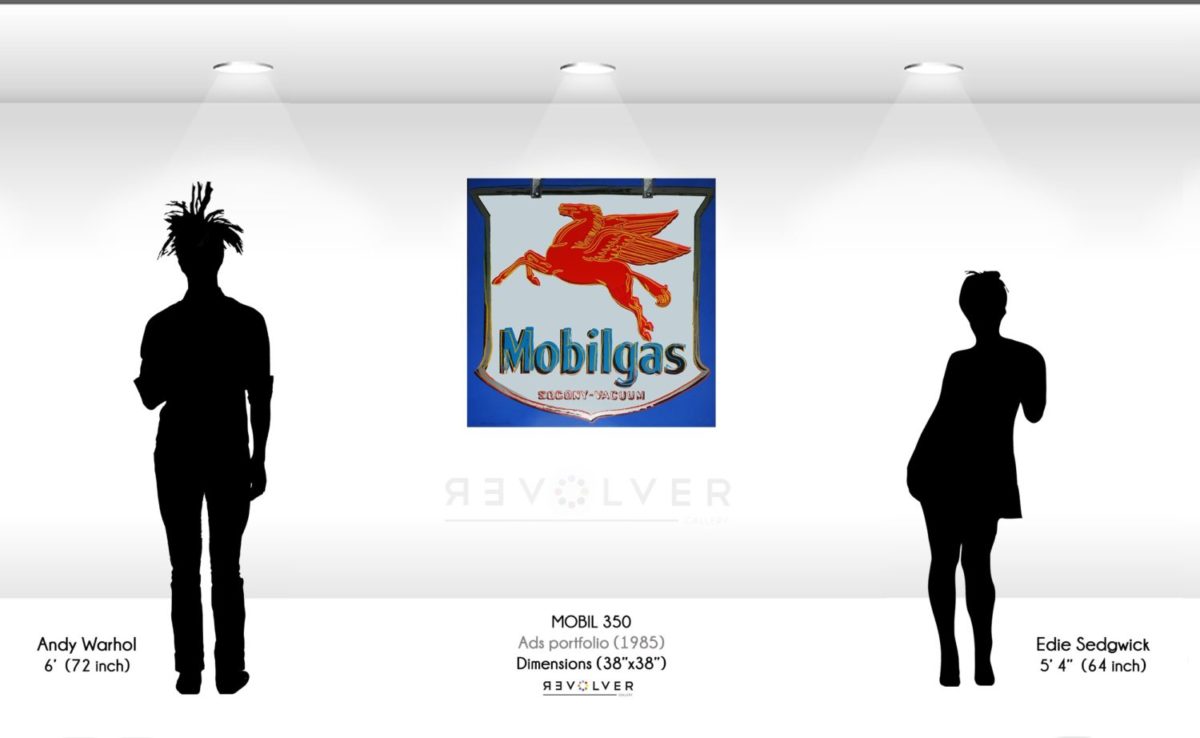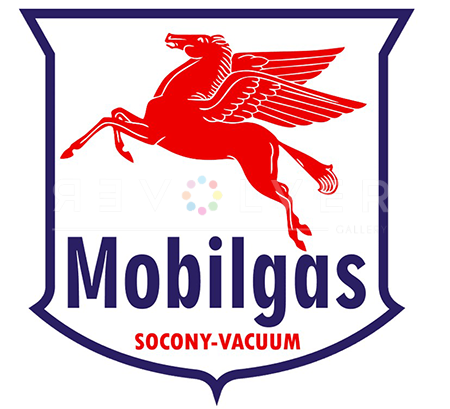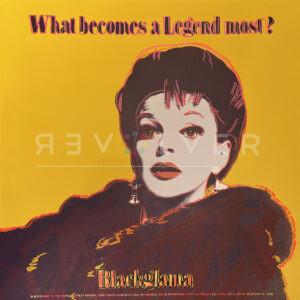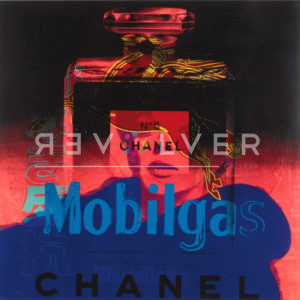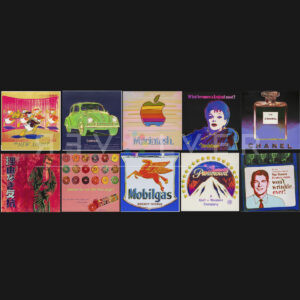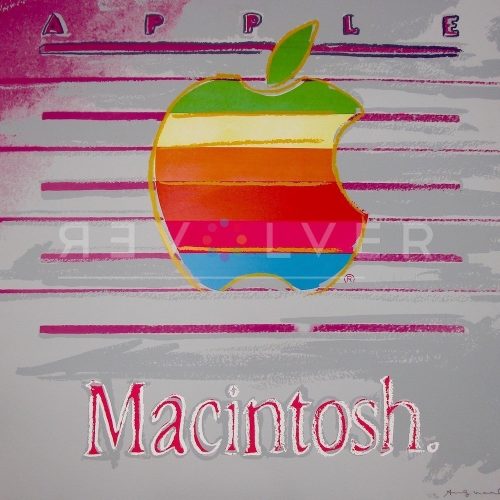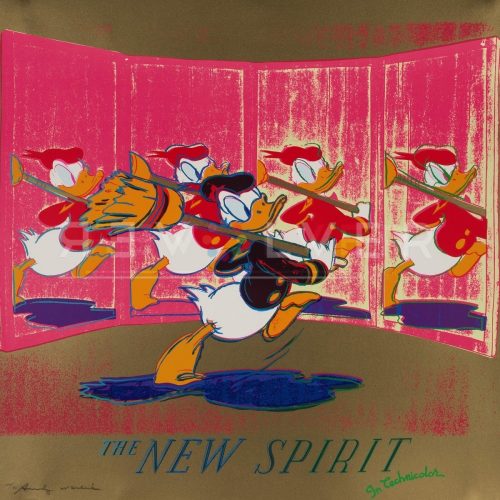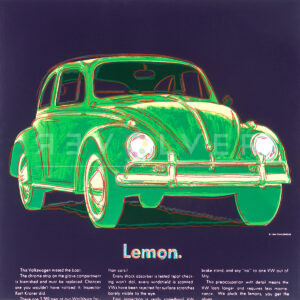Mobil 350 is a screenprint by Andy Warhol, published as part of his Ads series from 1985. The series, which includes ten Pop Art re-imaginations of popular advertisements, was commissioned and published by art dealer Ronald Feldman.
In this logo makeover, the noble Mobilgas Pegasus gets the bonafide Warhol treatment. Mobil 350 repurposes the omnipresent Mobilgas logo and electrifies it with neon and gold hand-traced outlines. Designed to look like a sign that might hang from the awning of a country gas station, the finish seems to be smooth and glossy like a brand-new classic car. Despite its charm, with its design clinging closely to the Mobilgas logo and the cherry red Pegasus’ amaranthine existence in society’s collective subconscious, Mobil 350 may first appear unremarkable when seen alongside the rest of the Ads portfolio.
Think again. It is unknown by many that the Mobil may very well be the most unique work in the lineup. In a collection of advertisements that rose from the most popular, quintessentially American consumerism symbols from the 50s, 60s, 70s, and 80s, the blueprint of Mobil 350 was the design of the oil company’s logo in the 1930s prior to their rebranding as Mobil Oil Corporation and later ExxonMobil. In addition to its more vintage origination, Warhol’s Mobil print represents a fundamental and even dreaded part of consumerism amongst a portfolio of glamorous advertisements that stand to entice even the most penny-pinching onlookers to open their pocket books. Indeed, the Mobil print does not represent luxurious commodities like Macintosh computers or Chanel perfume, but rather, the mundane yet necessary visit to the gas station, familiar to all Americans.
With a nod to his artistic beginnings as a commercial illustrator, Warhol’s Ads unapologetically appropriates widely known images, brands, films, and people. Already-alluring advertisements become splashed with more color and personality, but with a higher price and an elevated status making the collection simultaneously relatable to the masses and unattainable for most of society. In Ads, we see one of Warhol’s most well-known philosophies laid bare: “Being good in business is the best kind of art.”
Ads also includes Paramount, Life Savers, Apple, Van Heusen (Ronald Reagan), Blackgama (Judy Garland),The New Spirit (Donald Duck), Chanel, Rebel Without a Cause, and Volkswagen.
Photo credit: Mobilgas Vintage Logo, 1932-1939. Courtesy of Phillips.

